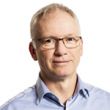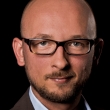17:00 - 18:30 Annual energy production: improved estimates through advanced modelling
Resource assessment


Room: Hall G2
Advanced modelling methods are now standard in wind estimating modelling of annual energy production (AEP). In this session, speakers will present round robin tests of models for spatial variability of wind resource on projects using different modelling approaches. We will look at the consequences of including atmospheric stability in the calculation of AEP offshore and how you can measure wind profiles at heights of 100-200 metres by using LIDARs with emphasis on charactering extreme shear situations such as low-level jets causing extreme loads. Finally, we will hear about the variability of turbulence intensities measured offshore.
You attended this session?
Learning objectives
- Understand the different methods for modelling the spatial variability of wind resource at the project scale and the errors based on the different modelling approaches;
- How to incorporate stability in the AEP modelling in offshore wind farms;
- Understand the effect of using high resolution modelled wind climatologies combined with advanced boundary modelling on the estimation of the tall winds at 100-200 metres;
- How to characterise and define the extreme events such as low-level jets that can cause fatigue loads in a wind farm;
- Understand the variability of the turbulence intensities offshore measured from multiple measurement towers.

Presenter

Co-authors:
Jonas Schmidt (1) F Chi-Yao Chang (1) Martin Doerenkaemper (1) Milad Salimi (2) Tim Teichmann (3) Bernhard Stoevesandt (1)
(1) Fraunhofer IWES, Oldenburg, Germany (2) Brandenburg University of Technology Cottbus-Senftenberg, Cottbus, Germany (3) Nordex Energy GmbH, Hamburg, Germany
Presenter's biography
Biographies are supplied directly by presenters at WindEurope Summit 2016 and are published here uneditedJonas Schmidt holds a Ph.D. in physics and has been working as a researcher at Fraunhofer IWES for five years, and before in the R&D department of Senvion. His main fields of research are currently wind farm aerodynamics, wind farm optimisation, wake modelling and CFD tool development for OpenFOAM. He is the main developer of the IWES wind farm modelling software flapFOAM and IWES meshers for complex terrain. Dr. Schmidt’s experience covers both research and industry projects with world wide partners, he furthermore teaches OpenFOAM and programming training courses with focus on wind energy applications.





Follow EWEA on: